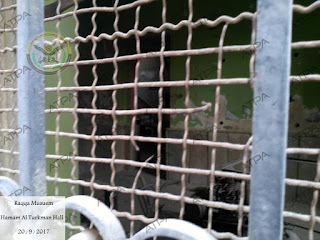Thursday, May 13, 2021 -  art forgery,Heritage Destruction,iconoclasm,Integrated Risk Management,New Zealand Art Crime Research Trust,Penelope Jackson,Tompkins
art forgery,Heritage Destruction,iconoclasm,Integrated Risk Management,New Zealand Art Crime Research Trust,Penelope Jackson,Tompkins
 No comments
No comments
 art forgery,Heritage Destruction,iconoclasm,Integrated Risk Management,New Zealand Art Crime Research Trust,Penelope Jackson,Tompkins
art forgery,Heritage Destruction,iconoclasm,Integrated Risk Management,New Zealand Art Crime Research Trust,Penelope Jackson,Tompkins
 No comments
No comments
6th Annual New Zealand Art Crime Symposium
Event: the 6th Annual New Zealand Art Crime Symposium
Location: City Gallery Wellington (Māori: Te Whare Toi)
Te Ngākau Civic Square, Wellington, New Zealand
Date: Saturday, 29 May 2021
Hosted by the New Zealand Art Crime Research Trust, in conjunction with City Gallery Wellington and other sponsors. On hand for the Symposium are a number of speakers encompassing a wide range of presentations on issues and aspects of art crime in New Zealand and elsewhere, under the umbrella of the overall theme of "Preventing Art Crime."
Speakers Include:
Speakers Include:
Jenny Harper – who will talk about her time as former Director of Christchurch Art Gallery (2006–2018) during and after the earthquakes, as well as the risks involved with major outdoor public art projects, as well as being the Commissioner for the New Zealand’s representation at the Venice Biennale on several occasions.
David Alsop – owner and director of Suite Gallery (Wellington and Auckland) and former solicitor. Suite Gallery represents major New Zealand artists including Ans Westra, Wayne Youle and Fiona Pardington. David will speak about preventing art crime from a dealer’s perspective.
Professor Robyn Sloggett – who is the Cripps Foundation Chair of Historical and Philosophical Studies at the University of Melbourne. Robyn’s work and research is about the science behind detecting art forgeries. She is renowned for her work in building knowledge of what characteristics constitute authentic works, providing effective protocols and rigorous procedures and bringing together multi-disciplinary knowledge to bear on questions of art forgery. Science has become an essential part of good curatorial practice, effective conservation procedure and art market diligence.
Associate Professor Rod Thomas - who teaches law at the Auckland University of Technology at undergraduate and postgraduate level, including an undergraduate paper called “Art Law”. Rod will provide a New Zealand perspective on art auction legal liability and risk.
Professor Simon Makenzie - who teaches Criminology at Victoria University of Wellington. Simon's work has included the Trafficking Culture research programme and the Trafficking Transformations project (2020-2025) which follows global illegal markets in collectable goods like antiquities, fossils and wildlife. Simon's most recent book is Transnational Criminology (2020), which develops a practical and theoretical understanding of global criminal trade, including trafficking in drugs, humans, arms, wildlife, diamonds and antiquities.
Dr Jonathan Barrett - who is an Associate Professor at the Wellington School of Business and Government. His research interests include art and law, and he has widely published on the subject in peer-reviewed journals and edited books. Among other projects, Jonathan has advised the Ministry of Culture and Heritage on the adoption of an artists’ resale royalty rights. Jonathan will speak about Brunelleschi’s Mirror, Perspectival Drawing and the Artful Prevention of Crime.
Those interested in registering should register via the Trust's website event's page.
For further information please contact the New Zealand Art Crime Research Trust.































